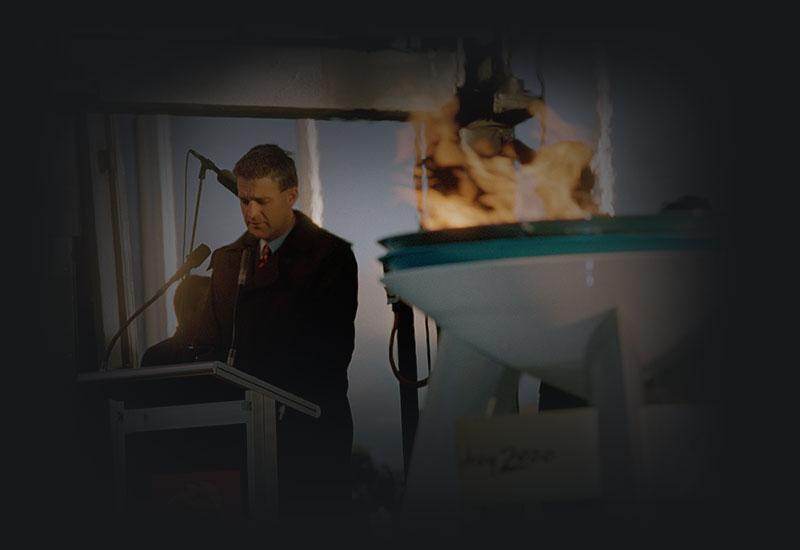Introduction
2000 was the year before the ‘year that changed everything’: 2001, when Al-Qaeda attacked the United States on 11 September, and the Howard government created its ‘Pacific Solution’ asylum-seeker deterrent – prisms through which Australian politics would be refracted for many years to come.1 The 2000 Cabinet papers reflect a relatively quiescent world in which Islamic terror attacks and offshore detention were barely glimpsed on the horizon. Then Prime Minister John Howard later mused, ‘we had no conception of the challenges which would engulf the world in the next few years’.2 His Liberal and National coalition government’s concerns in 2000 were overwhelmingly domestic, and the approach to issues with international ramifications was heavily weighted toward local implications over international obligations. Many matters canvassed in the 2000 Cabinet papers remain of intense ongoing national interest today, including policies concerning climate change, energy, provision of infrastructure and aged care. Unauthorised arrivals by boat were an emerging issue, but not yet one that dominated the atmospherics of national politics. On climate change and the interrelated issue of energy policy in particular, these papers reveal a wider range of opinion four years into the Howard government’s life than many, from today’s vantage point, might expect, and are likely to inform and stimulate discussion on what might have been had those Cabinet discussions concluded differently.
Enjoying a comfortable lower house majority of 14 seats, and with the accumulated experience of being halfway through its second term in office, the Howard government proceeded with its conservative re-engineering of Australia at a politically prudent pace. The memory of election night 1998, where until mid-evening the coalition government appeared to have lost, still lingered. The 2000 Cabinet papers illustrate the Prime Minister’s influence in ensuring the pace of change did not exceed Australians’ ability to absorb it, so that those who had supported the government’s re-election continued to do so. The 17-person Cabinet contained a former prime ministerial aspirant in Alexander Downer, two hopefuls in Peter Costello and Peter Reith, a former premier in John Fahey and just one woman, Senator Jocelyn Newman. It also contained three Nationals, including Deputy Prime Minister John Anderson, who had succeeded Tim Fischer as party leader in July 1999.
The 2000 papers show a Cabinet with a large work program, wedded to a perceptible strategic framework, working coherently within the limits of the politically possible. This did not mean giving up on ambitious policy. In the goods and services tax (GST) the Howard government achieved a near textbook demonstration of how to initiate a public conversation about, and structure expectations of, a complicated and controversial public policy; how to gain an electoral mandate for it; and then, as the 2000 Cabinet papers reveal, except for a couple of aspects, how to successfully manage the design and politics of an exacting implementation process. This time-consuming but historically well-established and proven process is too little seen in contemporary politics. Whatever one’s view of the GST in policy terms, the political and policy process which saw it conceived, implemented and accepted merits close study by governments and oppositions today. It is a signal demonstration that a controversial, politically risky policy, properly handled, can quite quickly become a routine, unremarked upon aspect of daily life.
The fate of one of the earliest papers considered in 2000 reveals the interplay of ideology, personnel and practical politics characteristic of the Howard Cabinet of that time. From the outer ministry, Employment Services Minister Tony Abbott, with his Cabinet senior, Finance Minister John Fahey, proposed in early February the closure of Employment National (EN) – the only government-owned entity left in a job services market that had otherwise been fully privatised in the government’s first term.3 EN was a loss-making venture, Abbott’s submission argued; it showed no prospects of imminent turnaround and, in any case, the parts of regional Australia potentially affected currently had more job services than at any time before. The regional impact statement accompanying the submission assessed the likely effect of EN’s closure as neutral. Departmental coordination comments showed broad support in the bureaucracy for the closure, even from, ‘on balance’, National Party leader John Anderson’s own Department of Transport and Regional Services. On paper, the proposal to shut down EN looked almost certain to succeed.
Even the strongest and most widely supported submissions, however, are malleable to political considerations in the forcing house of Cabinet. At the 9 February meeting Abbott’s argument was backed by Employment, Workplace Relations and Small Business Minister Peter Reith, Foreign Minister Alexander Downer and Immigration and Multicultural Affairs Minister Philip Ruddock. In his memoir Reith recalls John Howard as the Liberals’ ‘lone voice’ opposing it.4 Health and Aged Care Minister Michael Wooldridge and Communications, Information Technology and the Arts Minister Richard Alston wavered once they heard Howard’s argument against shutting down EN. Whatever the reality, Howard said, it would be seen as a cut to services in the bush, something the coalition had expressly promised not to do; he also observed that going from a government monopoly in job services to a fully private market in two years was in any case a bit quick. Cabinet’s National Party ministers were as one with the Prime Minister. ‘At the start of the meeting there was an overwhelming mood for closure,’ Reith’s contemporaneous diary note of the Cabinet discussion noted. Nevertheless, the proposal was defeated: the Cabinet decision was for EN to continue operating. ‘No one pretended that there was any rational reason for the decision – it was pure politics,’ said Reith.
As Abbott’s unsuccessful bid to close EN shows writ small, and as key adjustments made to the GST after its implementation show writ large, Cabinet during the Howard government’s second term operated in a way that saved it from political overreach of the kind which, in policies such as WorkChoices, which won Cabinet approval five years later, contributed to its 2007 election loss.

